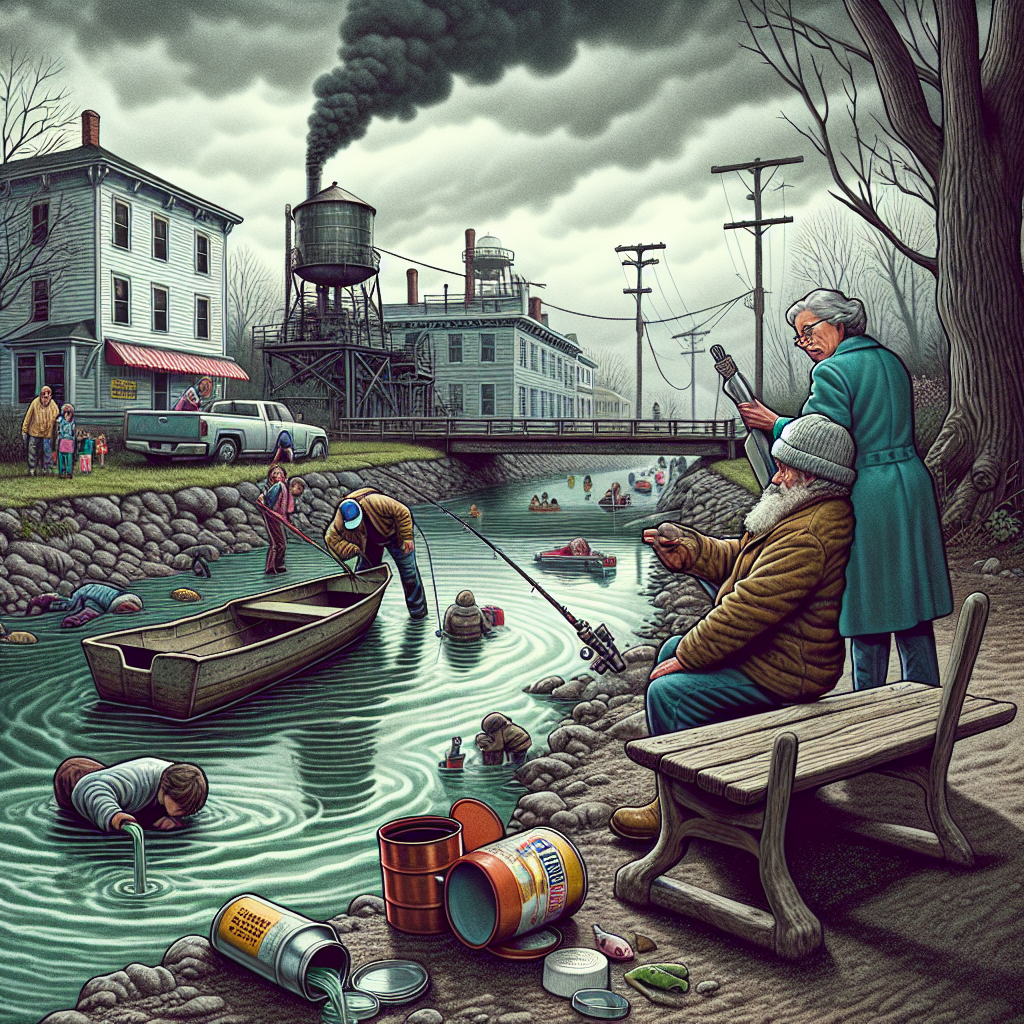“Silent Waters, Shared Burden: Chesterburgh’s Fight to Save Mill Creek”

Chesterburgh’s afternoon skies had folded into a restless gray by the time I arrived at Mill Creek Park, a place usually known for quiet afternoons and the mingling scents of damp earth and pine. Today, though, the air carried something more urgent—a heavy tension that hovered like a storm cloud refusing to pass. Local residents were gathered in small clusters, faces drawn and voices low but insistent. The news had spread rapidly after the city’s environmental office confirmed that dangerous levels of chemical contaminants had been detected in the creek’s water—a discovery that, if not addressed soon, could ripple through every corner of town.
Mill Creek is more than just water running through Chesterburgh; it is the town’s pulse beneath the surface. Generations have fished its banks, children have dipped their toes during humid summers, and families have gathered near its edges to share picnics and stories. It is part of the landscape of memory here—woven into the rhythm of everyday life and the stories people hold dear. And now, for many, it feels as if a quiet wound has been laid bare beneath the crystalline surface.
At the center of the growing concern was Marie Dalton, a lifelong resident and an unofficial guardian of the creek. I found her near a worn wooden bench, a place she often sat to watch the herons wade through shallow pools. Her weathered hands cradled a thermos steam-wreathed in the cold air, and her voice, usually so steady, trembled slightly.
“This creek has seen everything—spring floods, droughts, kids learning to skip stones. But what we’ve got now, it’s different. It’s something we can’t fish or swim away from.”
It started, as many such things do, with a question. Last month, a few residents noticed odd patches of foam along the waterline, accompanied by a faint chemical smell that seemed out of place in this quiet corner of Chesterburgh. Concerned, they reached out to the city, which sent testing teams to analyze the water. The results were unsettling: trace amounts of industrial solvents and heavy metals exceeding safety thresholds. But from where, no one could say for certain.
I walked the creek’s edge with Luis Moreno, who runs the local bait and tackle shop just down Main Street. Luis knows the creek like the back of his hand, and his brow furrowed as he looked at the slick water surface.
“This creek’s been the heart of my business and my family since before I was born. If it’s poisoned, it’s not just the fish we lose. It’s part of who we are,” he said, voice low, almost choking on the weight of the words. “We all depend on this water, in ways most folks don’t even realize.”
The cause of the contamination remains unclear, but fingers are pointing toward the industrial park on the outskirts of town. Several older factories there have a history stretching back decades, their faded brick and rusting infrastructure a testament to Chesterburgh’s manufacturing roots. Some residents suspect that aging waste management systems or illegal dumping might be to blame.
City officials released a statement urging calm and promising a thorough investigation. Yet in town meetings and on social media threads, the anxiety swells. Parents worry about children playing near the creek; anglers worry about their catches; local businesses worry about the economic fallout if the creek’s health declines. It is a collective breath held too long, a quiet unease creeping into the everyday hum of Chesterburgh life.
I spoke with Dr. Priya Singh, an environmental scientist at Chesterburgh State University, who was called in to consult on the contamination. Her tone was grave but measured.
“The presence of these chemicals at this level is concerning because they pose serious health risks to both humans and wildlife. Prolonged exposure can lead to neurological, developmental, and reproductive harm,” she explained, setting down her clipboard beside t
